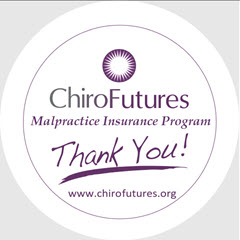Association of College Presidents Support Expanding Medicare to Full Scope

In a memo to the Association of Chiropractic College (ACC) Presidents, attorney David O’Bryon who serves as the ACC President lays out very clearly that the ACC “. . .supports expanding patient access to the full scope of chiropractic practice.”
In his memo (reprinted in full below) O’Bryon lauds the Medicare proposal being offered by the American Chiropractic Association (ACA) stating:
“The ACA's legislative proposal is to expand Medicare patients' access to chiropractic care. The proposed bill's objective -- to expand patient access to chiropractic's full scope of practice -- benefits patients, our students who will serve them and is a path to full services as outlined by state scope of practice laws. Successful legislation that provides full reimbursement for care will enable our current students and alums to help make their practices successful and help with student loan expenses (emphasis added). I believe that all parties can agree on this.”
According to O’Bryon the ACA proposal would expand coverage to the full extent of states’ scope of practice.
O’Bryon also refers to his desire to remove subluxation from the legislation and instead place it in a “purpose clause.” According to O’Bryon, the Executive Committee of the ACC was 100% in favor of removing subluxation from the language in this manner. The ACC Executive Committee is made up of the following individuals:
- Chair - Dennis Marchiori, DC, PhD
- Vice Chair - Todd Knudsen, DC
- Secretary/Treasurer - Clay McDonald, DC, MBA, JD
- Immediate Past Chair - Brian McAulay, DC, PhD
- President - David O'Bryon, JD, CAE
In addition, according to O’Bryon all members of the so called Chiropractic Summit Group (except for the ICA) agreed with the removal of subluxation language in this manner.
O’Bryon further laments that unless these types of changes are made chiropractors would not be able to treat rotator cuff injuries under Medicare.
While the ACC and the Summit group may have seen the ACA’s proposal and are rallying around it no one else in the profession has seen it. In fact, according to the ACA Legislative Chair the ACA has not developed any language yet.
The ICA has draft language of their own but has not yet released it to the public.
In contrast to the proposals being circulated by the ACA, ACC and Summit Group, the International Federation of Chiropractors and Organizations (IFCO) along with a Coalition of other organizations has developed and endorsed Medicare language that retains the unique services and lexicon of the chiropractic profession.
The following organizations have joined together in a coalition to support this legislative language:
- The International Federation of Chiropractors and Organizations (IFCO)
- The Foundation for Vertebral Subluxation (FVS)
- The Chiropractic Society of Texas (CST)
- The Florida Chiropractic Society (FCS)
- The Palmetto State Chiropractic Association (PSCA)
- The Chiropractic Fellowship of Pennsylvania (CFOP)
- The Sustainability Group (SG)
The ICA was asked to endorse this language but declined.
The following is the full text of O’Bryon’s Memo:
The purpose of this memo is to provide the ACC board with some background information on a legislative proposal that ACA brought forward and that the Summit group has been reviewing.
The ACA's legislative proposal is to expand Medicare patients' access to chiropractic care. The proposed bill's objective -- to expand patient access to chiropractic's full scope of practice -- benefits patients, our students who will serve them and is a path to full services as outlined by state scope of practice laws. Successful legislation that provides full reimbursement for care will enable our current students and alums to help make their practices successful and help with student loan expenses. I believe that all parties can agree on this.
A little bit of history about the legislative proposal:
When Congress originally put chiropractic into Medicare in Title 42, Section 1861 (r) we were included in the list of physicians; however, a clause was added that limited our services to correcting subluxations of the spine only and in reality reduced chiropractic to a modality, not a discipline. The legislative proposal that ACA is currently putting forward would expand our coverage to the full extent of our state scope of practice.
Opponents of the current proposal are concerned that the word "subluxation" (included in the current statute) would fall out with the expansion. The Summit was asked to look at this issue. At the Summit, the ICA expressed a concern that any new legislation must assure that our current coverage is not diminished. After five hours of discussion, it was clear that we had reached an impasse. ACA's suggested legislative language is to include chiropractic in the main clause of 1861 (r) in the exact way that other disciplines are included (without the limiting language that essentially makes us a modality). ICA, on the other hand, wants to keep the original language in any subsequent bill.
As a compromise, I suggested that the draft bill contain a "purpose" clause which is frequently found in legislation. If such a bill was passed, the purpose clause would contain the "subluxation" language and a Public Law citation would be available for quotation. After suggesting this, the Summit roundtable representatives were asked to go back to their organizations to get a sense whether this approach would work. Following the ACC custom, the ACC Executive Committee was asked whether this was a potential course of action. There was 100% support for the idea. Other groups went back to their organizations as well. All the groups found this approach favorable, except ICA.
ICA went back to their full board for some preliminary feedback. ICA desires to keep the original language (which limits scope of practice). In rejecting the compromise approach, it appears that ICA's objective was not to just assure that current coverage was maintained but to make sure that the subluxation language was explicitly in the law. The concern is that this approach allows the regulators an opportunity to play with Congressional intent which puts us back into the same position we are today.
The trouble with the current language is that it is for spine only care. For example if a patient comes into the office for a rotator cuff issue it is not a covered service (remember the spine only language). The bureaucrats that promulgate the regulations based on the legislation have hampered our services to our patients. We all agree on that. No matter what form the current subluxation clause will need to be amended.
The reality is that whatever legislative language we devise at this point, is not the final. Congress has what is called an Office of Legislative Counsel (Leg Counsel) that actually will draft the bill that is introduced.
We have two issues: one legal and one political. A more complicated bill is a heavier lift for a bill that is heavy already. The Leg Counsel will determine one course and the wording will be scored by the Congressional Budget Office for cost. The second issue is the political one. ACA has come up with $250,000 to spend on the effort. NO OTHER GROUP HAS COME FORWARD WITH THAT COMMITMENT. ICA has come out with a position paper.
This proposal is a long time coming and will not be easy nor quick. It is my belief that we cannot afford to get lost by only seeing the tree in front of us and missing the forest in which we are standing.
As you all know, there are some in the profession (within the ACA and the ICA) that have a difference of opinion on how to advance the bill, and there may be multiple ways to do so.
Unfortunately there is some misinformation out on the Internet. Just to clarify: ACC has not proposed dropping our current coverage in Medicare, but rather ACC supports expanding patient access to the full scope of chiropractic practice.
Every chiropractic practitioner adjusts/corrects subluxations and we need to assure that we can continue to do so. As spinal care experts and practitioners concerned about the overall well being of our patients, we need to think into the future as an integral part of our patients' health care.
I wanted you to be fully aware of the variety of issues surrounding this proposal.
David O’Bryon JD
4424 Montgomery Avenue, Suite 202
Bethesda, MD 20814
Tel. 301-652-5066
Fax 301-913-9146
obryonco@aol.com

Blogs
- The Chiropractic Cartel: A Look Back at Bias in Accreditation and its Imact on Today's Profession
- Inside Montana's Chiropractic Monopoly: ACA & MCA's Brazen Board Takeover
- Concerns Grow About Control of the NY State Chiropractic Board by the ACA - Use of X-ray in NY Under Threat
- Reproductive Health Information and Chiropractic Care: Navigating New Privacy Regulations
- Navigating Substance Use Disorder (SUD) Consent: What Chiropractors Need to Know













